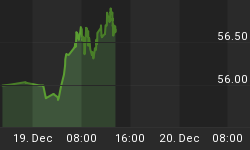In the longer term, the risk of the U.S. suffering through a bout with hyperinflation is very real. However, in the short term what we most likely face is a protracted period of stagflation first because of our record debt and the Fed's decision to pay interest on excess bank reserves.
What is clear is that despite government's best efforts, the rate of increase in bank lending is falling off a cliff. According to the St. Louis Federal Reserve, Total Commercial and Industrial Loans are up 3% from the year ago period and Total Loans and leases are up just 2% Y.O.Y. While that's still an increase in lending those rates are down from 22% and 13% respectively from their 2007 level.
So why are banks not pushing more money out the door even at record low interest rates? It's a fairly well known fact that Household debt (97% of GDP) and total debt (360% of GDP) are dampening the general desire to borrow. But what is less talked about is the decision by the Federal Reserve to pay the same interest rate on both commercial banks' excess and required reserves held at the Fed.
In October of 2008, the Fed decided to pay interest on the money it holds for commercial banks because it wanted to place a floor under the Funds Rate, which is the rate banks charge each other for overnight loans. At that time, the spread between the interest paid on required reserves and the interest paid on excess reserves was .75%. Banks still had plenty of incentive to lend their money held at the Fed as they received a much higher rate on required reserves (money-backing loans) than excess reserves. But on December 24th, 2008, the Fed lowered the interest paid on all reserves to .25%. Although that may seem like a paltry rate, it is still averaging about .10% above the Effective Federal Funds Rate and .16% above the 3 month Treasury bill. Banks now have little reason to lend to each other and can earn more loaning risk free to the Fed for 3 months than by lending money to the Treasury.
The Monetary Base now stands at $1.78 trillion, but the amount of excess reserves has also grown to $862 billion -- both all-time record highs. So, while many (including myself) fret over the tremendous build up in the Base, much of that increase is currently laying dormant at the Fed. The question is: why does the Fed continue to pay banks not to make loans?
Its rational for performing a levitation act on the Funds rate seems a bit futile as it now stands at just .15%. One can only hope that the Fed is actually fearful of its own monetary creation and does not want banks to deploy the full force of the Base as that would lead to hyperinflation in short order.
Until banks begin to increase lending and the money multiplier kicks into full gear we will not experience surging inflation. However, because of our record deficit spending, the Fed will be huge factor in funding Treasury's ballooning debt. Thus, Mr. Bernanke is now forced to be a major participant in Treasury auctions because of his desire to keep rates artificially low. The most likely outcome is for economic growth to remain well below trend because of the massive deleveraging that the economy still must endure while inflation simultaneously becomes more salient as the Fed monetizes the national debt.
The Fed's challenge in the long term will be to remove that liquidity without destroying the economy in the meantime, a nearly impossible task as I outlined in a previous commentary. If Bernanke and company cannot shrink the balance sheet once banks begin to lend with abandon once again, the likelihood of hyperinflation skyrockets. Or if the government continues to print trillion-dollar deficits as far as the eye can see, the Fed will eventually create intractable inflation in order to diminish the value of that debt. But for investors the current challenge will be to hedge their portfolio against insidious inflation that should not be of the "hyper" variety -- at least for now.
*Tired of paying fees while your account value plummets? Learn about our new performance-based pricing.
Be sure to listen in on my Mid-Week Reality Check.















